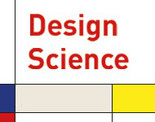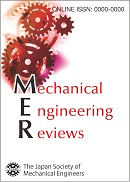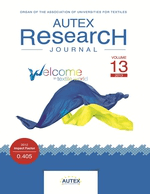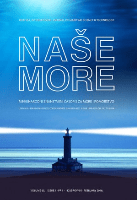
Journal of Integrated Design & Process Science
Scope & Guideline
Transforming Ideas into Integrated Solutions for Tomorrow.
Introduction
Aims and Scopes
- Human-Centered Design and AI Integration:
The journal emphasizes the importance of human-centered approaches in the integration of artificial intelligence within design and manufacturing processes, aiming to enhance collaboration between humans and machines. - Transdisciplinary Research:
It promotes research that transcends traditional boundaries, encouraging contributions from multiple disciplines such as engineering, healthcare, and social sciences to address complex design and process challenges. - Digital Transformation and Cyber-Physical Systems:
The journal explores the transformation of industries through digital technologies and the development of cyber-physical systems, focusing on their design, implementation, and impact on manufacturing and services. - Sustainability and Environmental Considerations:
A core area of focus is the evolution of products and processes in response to environmental challenges, advocating for sustainable practices in design and engineering. - Educational Innovations in STEM:
The journal also addresses innovations in STEM education, seeking to improve learning outcomes and prepare future generations for the challenges of integrated design and process science.
Trending and Emerging
- Artificial Intelligence and Machine Learning Applications:
The integration of AI and machine learning in design and manufacturing processes is increasingly prominent, showcasing innovations that enhance decision-making, efficiency, and product development. - Healthcare Innovations and Patient-Centric Approaches:
Recent works emphasize the need for innovative healthcare solutions that prioritize patient experiences and outcomes, reflecting a broader trend towards user-centered care in health systems. - Digital Engineering and Industry 4.0:
The journal is witnessing a growing interest in digital engineering practices and the implications of Industry 4.0 technologies, highlighting the importance of smart manufacturing and connected systems. - Collaborative and Adaptive Systems:
There is a notable trend towards research on collaborative systems, including human-robot interactions and adaptive systems that respond to real-time data and user needs. - Sustainability and Social Responsibility:
Emerging themes increasingly focus on sustainable design practices and the social implications of engineering solutions, indicating a shift towards ethically responsible innovation.
Declining or Waning
- Traditional Manufacturing Processes:
There appears to be a waning interest in conventional manufacturing methodologies, as the focus shifts towards more innovative and technology-driven approaches, particularly those involving AI and digital transformation. - Basic Theoretical Frameworks:
While foundational theories remain important, there is a noticeable decline in papers devoted solely to theoretical discussions without a practical application component, as the journal increasingly favors applied research. - Single-Disciplinary Focus:
There is a decreasing number of publications that concentrate on single-discipline insights, with a clear trend towards interdisciplinary and transdisciplinary studies that integrate knowledge from various fields.
Similar Journals

Journal of Engineering Science and Technology
Exploring the Frontiers of Engineering Science and TechnologyThe Journal of Engineering Science and Technology, published by TAYLORS UNIV SDN BHD, is a noteworthy open-access publication dedicated to advancing knowledge across various engineering disciplines. Since its inception in 2006, this journal has provided a vital platform for researchers, professionals, and students to disseminate their findings and innovations in engineering. With a focus on interdisciplinary approaches, it aims to bridge the gap between theoretical studies and practical applications, fostering collaboration among academia and industry. Currently ranked in the Q3 quartile for General Engineering by Scopus, the journal highlights emerging trends and promotes high-quality research in engineering fields. Based in Malaysia, the journal invites contributors worldwide, making it a significant contributor to the global engineering community's discourse. With its ongoing commitment to accessibility and scholarly integrity, the Journal of Engineering Science and Technology continues to play an essential role in shaping the future of engineering research.

International Journal of Integrated Engineering
Fostering collaboration for a sustainable engineering future.International Journal of Integrated Engineering, published by UNIV TUN HUSSEIN ONN MALAYSIA, serves as a critical platform for disseminating research and advancements in the comprehensive field of integrated engineering. With an ISSN of 2229-838X, this journal is pivotal in enhancing interdisciplinary collaboration and innovation across numerous engineering domains, including Civil, Electrical, Mechanical, and Industrial Engineering. Although it currently holds various Q4 categories and competitors in the Scopus ranks, the journal consistently aims towards enhancing its impact and expanding its scope. Researchers can benefit from sharing their findings with a growing audience keen on the latest engineering developments. The journal emphasizes open access, making it a vital resource for academics, practitioners, and students alike who seek to stay informed about emerging trends and technologies in integrated engineering.

JOURNAL OF MECHANICAL DESIGN
Elevating Standards in Mechanical Engineering Research.JOURNAL OF MECHANICAL DESIGN, published by the renowned American Society of Mechanical Engineers (ASME), is a leading peer-reviewed journal dedicated to the dissemination of cutting-edge research in the fields of mechanical engineering, computer graphics, and computer-aided design. With an impressive impact factor and categorized within the top Q1 quartile across multiple disciplines, it ranks among the most influential journals in engineering, aiming to foster innovation and collaboration among researchers and practitioners. The journal has maintained its stature since its inception in 1978, presenting articles that encompass a broad range of topics, including advanced design methodologies and novel applications of mechanical systems. The journal does not operate under an open-access model, ensuring that its content remains exclusive for its affiliated audience. As it plans to continue publishing until 2024, the JOURNAL OF MECHANICAL DESIGN stands as a crucial resource for professionals and academics seeking to enhance their knowledge and contribute to advancements in mechanical design.

Design Science
Pioneering Research at the Forefront of Design.Design Science, published by Cambridge University Press, is a premier open access journal that has established itself as a leading platform for innovative research in the interdisciplinary field of design. Since its inception in 2015, the journal has focused on integrating design theories with practical applications across various sectors, including engineering, visual arts, and simulation modeling. With a remarkable impact factor and high rankings in multiple categories—Rank #11/667 in Visual Arts and Performing Arts and Rank #79/307 in General Engineering—Design Science commands a prominent position, being ranked in the top 98th, 76th, and 74th percentiles within its respective fields according to Scopus. The journal's dedication to open access ensures that cutting-edge research is accessible to a global audience, fostering collaboration and dialogue among researchers, professionals, and students alike. This journal not only aims to advance the understanding of design sciences but also serves as a vital resource for those seeking to explore the evolving dynamics of design practice in a rapidly changing technological landscape.

COMPUTERS IN INDUSTRY
Harnessing technology to redefine industrial landscapes.COMPUTERS IN INDUSTRY is a premier journal published by Elsevier, dedicated to the exploration and advancement of the intersection between technology and industrial applications. With a history spanning from 1979 to 2024, this high-impact journal holds prestigious Q1 rankings in both Computer Science and Engineering, showcasing its significant contribution to the fields of general engineering and computer science. Notably, it ranks #4 out of 307 journals and #9 out of 232 journals in their respective categories on Scopus, placing it in the top 2% of publications worldwide. Although it is not an Open Access journal, it continues to serve as a vital resource for researchers, professionals, and students seeking in-depth insights and innovative research findings in industrial computing. The journal’s objective is to publish high-quality, peer-reviewed articles that advance the understanding and application of computer systems in industrial environments, reaffirming its crucial role in driving technological progress and operational efficiency.

FME Transactions
Pioneering insights in Mechanical Engineering and Materials Science.FME Transactions is a distinguished open-access journal published by the Faculty of Mechanical Engineering, University of Belgrade, that has been making significant contributions to the fields of Mechanical Engineering and Mechanics of Materials since its inception in 2002. The journal holds an impressive Q2 classification in Mechanical Engineering and Q3 in Mechanics of Materials as of 2023, highlighting its critical role in advancing engineering knowledge and technology. With an extensive distribution in both print (ISSN: 1451-2092) and online formats (E-ISSN: 2406-128X), FME Transactions emphasizes high-quality, peer-reviewed research that addresses contemporary challenges faced by engineers and material scientists. Positioned within the 59th percentile of its category in Scopus rankings for Mechanical Engineering and at 54th percentile for Mechanics of Materials, the journal is a go-to resource for researchers, professionals, and students seeking to enhance their understanding and application of cutting-edge engineering principles. The journal’s commitment to open access ensures that its valuable findings are readily available to a global audience, fostering collaboration and innovation in engineering practices.

ICONARP International Journal of Architecture and Planning
Advancing innovative solutions in architecture and urban design.ICONARP International Journal of Architecture and Planning is an esteemed open-access publication that serves as a pivotal platform for fostering innovative research and discussions in the fields of architecture and urban design. Published by KONYA TECHNICAL UNIVERSITY, FACULTY OF ARCHITECTURE & DESIGN, this journal has been committed to the dissemination of high-quality academic work since 2013, promoting accessibility and global collaboration among researchers, professionals, and students. With its rigorous peer-review process and a focus on contemporary architectural and planning challenges, ICONARP seeks to contribute significantly to scholarly discourse and practical applications within the built environment. The journal is indexed in various scientific databases, enhancing its visibility and impact in the academic community. By appealing to a diverse audience, ICONARP encourages interdisciplinary studies and innovative solutions that address the complexities of modern architecture and urban living.

Mechanical Engineering Reviews
Empowering researchers with cutting-edge reviews and methodologies.Mechanical Engineering Reviews, published by the Japan Society of Mechanical Engineers, is a leading peer-reviewed journal dedicated to advancing the field of mechanical engineering through extensive reviews and comprehensive analyses. With its ISSN 2187-9753, this journal serves as an essential resource for researchers, professionals, and students alike who seek to stay abreast of the latest developments, methodologies, and technological advancements in mechanical engineering. Although specific details regarding its impact factor and access options are currently unavailable, the journal is recognized for its scholarly contributions and its role in disseminating vital knowledge within the global mechanical engineering community. Located in Tokyo, Japan, the journal strives to foster innovation and interdisciplinary collaboration, making it an indispensable platform for sharing insights that drive the field forward.

Autex Research Journal
Unlocking knowledge in textile engineering and innovation management.Autex Research Journal is a distinguished *open access* academic journal published by WALTER DE GRUYTER GMBH, specializing in the interdisciplinary fields of Industrial and Manufacturing Engineering, Management of Technology and Innovation, and Materials Science. Since its inception in 1999, the journal has fostered scholarly communication by offering a platform for innovative research and advancements in textile technology and related disciplines. With an impact factor indicative of a solid academic reputation, the journal holds a prestigious Q3 quartile ranking in multiple categories, including Industrial and Manufacturing Engineering and Management of Technology and Innovation, positioning it as a noteworthy resource for both researchers and practitioners. The journal embraces a global perspective, featuring a broad scope of topics pertinent to textile science, innovation management, and material application in various industries. Its open access format since 2012 ensures that the latest research is freely available to a wide audience, reinforcing its commitment to the advancement of knowledge and technology in textiles. Researchers, professionals, and students alike will find the *Autex Research Journal* an invaluable resource for staying updated on developments within these dynamic fields.

Nase More
Bridging Disciplines in Ocean and Environmental StudiesNase More is a prominent open-access journal dedicated to the fields of Ocean Engineering, Process Chemistry and Technology, Water Science and Technology, and Transportation. Published by the University of Dubrovnik, this journal has been disseminating valuable research since its inception in 1994, with a commitment to providing unrestricted access to scholarly work since 2003. The journal boasts a diverse range of submissions that contribute to the advancement of knowledge and innovation within its scope, making it an essential resource for researchers, professionals, and students alike. With a current impact factor reflected in its Category Quartiles as Q4 in Ocean Engineering, Q3 in Process Chemistry and Technology, and Q4 in related fields, Nase More is positioned to meet the evolving needs of its readership. Located in the picturesque city of Dubrovnik, Croatia, this journal not only serves as a platform for rigorous academic inquiry but also fosters collaboration and dialogue among experts in environmental science and engineering disciplines.